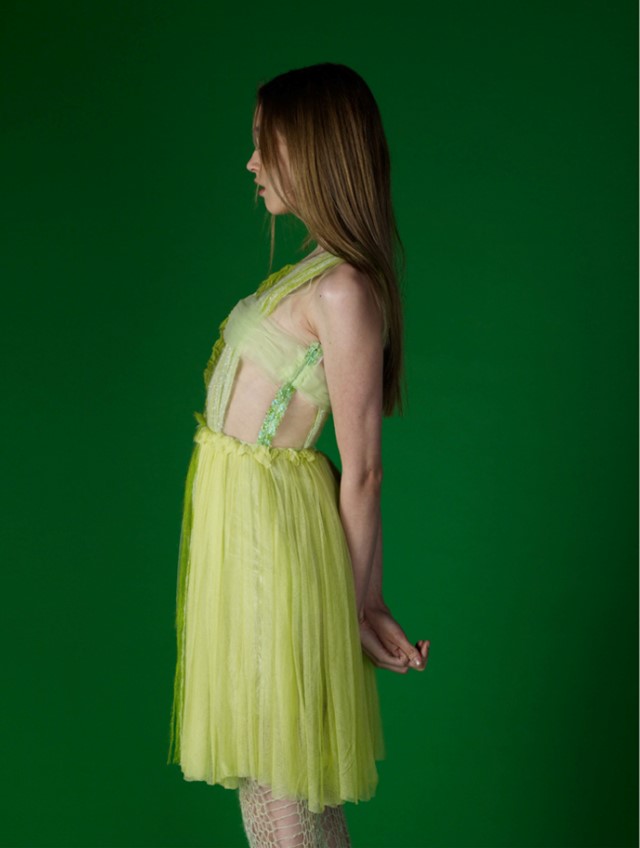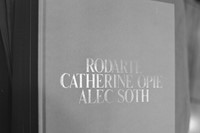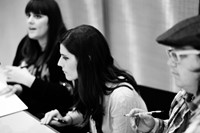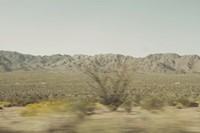What to make of the Mulleavy sisters of Rodarte? Consistently America’s most intriguing designers, Kate and Laura take obsessions and minuscule fascinations from their lives – anything from the redwood forests of California to Japanese horror films,
What to make of the Mulleavy sisters of Rodarte? Consistently America’s most intriguing designers, Kate and Laura take obsessions and minuscule fascinations from their lives – anything from the redwood forests of California to Japanese horror films, and in their recent S/S12 collection, the paintings of Van Gogh, to create a vision that’s at once intensely personal and endlessly fascinating. You want to know what’s going on in their minds. And if sometimes trying to grasp their myriad of influences can prove an torturous experience, their first publication Rodarte, Catherine Opie, Alec Soth goes some way to setting out some of the thought processes behind their work. In it, they collaborate with two artists: commissioning the American photographer Alec Soth, known for his wayward images of middle America to take a roadtrip through California, the source of so many of their inspirations; and also the renowned portraitist Catherine Opie to shoot models, friends and even her eight-year-old son in the clothing of Rodarte in Holbeinesque style against solid coloured backgrounds. Landscape and portraiture intertwine throughout the book providing a tantalising insight into the fever dream world of Rodarte. Just days after presenting their S/S12 collection at the Gagosian Gallery, Kate and Laura Mulleavy and Catherine Opie sat down with AnOther at the New York Public Library to talk about their collaboration.
When did you become aware of Catherine Opie’s work?
Kate: Actually I feel I’ve been aware of her work for a long time. Testament to that is that when we started this book, half my friends from college were like, “You got to work with Catherine? No way!” They were so jealous! I feel that sums up how we feel about her work. Then I lucked out and got to sit next to her at a Gagosian Dinner and I was kind of freaking out.
Catherine: And I was so psyched to sit next to another woman who looked more like me! She told me how she’d spent the weekend singeing fabric. and I told her how my son who’s seven really loved fashion.
Can you remember the impact Catherine’s work made on you?
KM: Actually it’s really hard to talk about the impact that really important work has on you. There’s an academic way and there’s also a way that’s indescribable. There’s an aura surrounding really powerful work that changes the way you look at something. We’ve just been in Florence and we saw a lot of Fra Angelico and it was the same sort of thing. I thought I had such a vocabulary to talk about art but seeing things like that, I felt like I had no context for it. So that’s the impact that kind of work has on you – it’s almost like starting new.
Catherine, how aware were you of the work of Rodarte?
CO: I was aware of them definitely. But I have to be honest – I’m a butch so I follow men’s fashion. What I was interested in with Kate and Laura was their relationship to art and there’s a certain kind of sculptural aspect with their work that I found really fascinating. In the same way Matthew Barney was bringing sculpture to film, I felt Kate and Laura were bringing this sculptural element to clothing. They’re constantly pulling from things and that was really apparent and powerful for me.
Do you feel in making the book, it explains some of your ideas so much better than a 10-minute conversation backstage after the show?
CO: I think the book is a narrative in a way. There’s moments in which my photographs and Alec’s photographs come together in a relationship where there’s this extension of what the clothing does in terms of ideas of landscape that gets carried over in the actual photograph and I think those are really poignant, kind of amazing moments that happen.
LM: It makes me look at it differently. I have the perspective of knowing where the clothing comes from. So when I see a piece of clothing, I see something beyond it. The collection we just did was based on Van Gogh but I see all the stuff that went into it at the back of my mind.
So much of your work is about the experience of living in California, when did you first realize it was this special place?
KM: it really is an extreme landscape. Our dad was a botanist and we were surrounded by people who were obsessed with small details which I think had a lot to do with translating a lot of the ideas that came later on. I think also we’re very sensitive to landscape and there’s something about the nature of being in the west that’s really fascinating to us. Everything we do is very personal as we’re drawing on the things that we know. I don’t think of fashion in the way a lot of people do – it’s a way of understanding ourselves. It’s not about perfect images.
LM: Weirdly enough we gave Alec a list of places and a list of songs before he started his trip. He called it a treasure map. We were trying to get him to see California for the first time. I never told him to photograph the Witch’s Hair on the way to Death Valley yet that was the inspiration for our Japanese horror collection. There were all these weird correlations between us not telling him details, and him seeing things and taking photos of it.
Did you start to see some sort of narrative form when you were putting the book together?
LM: Definitely. Everything we create is rooted in things we’ve seen. So it was interesting to put it all together and see that there is a narrative there.
CO: The history of the collections I photograph is in a relationship with what Alec captures – it actually becomes a roadmap. And it’s about the connectivity that fascinates as you go through, and within that, there is also this conversation with Rodarte.
Rodarte, Catherine Opie, Alec Soth is published by JRP Ringier.
Suggested Reading: See AnOther's coverage of Rodarte's S/S12 collection and the provenance of the label's name and correct pronunciation.



